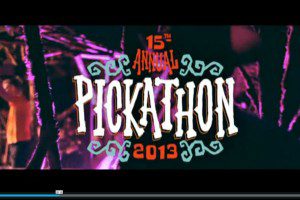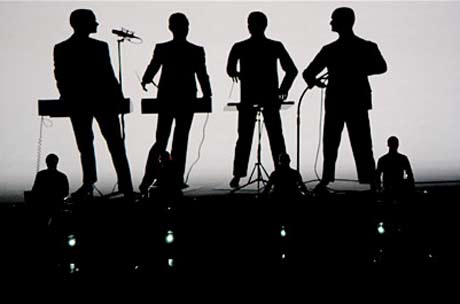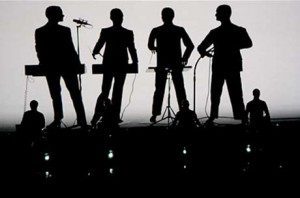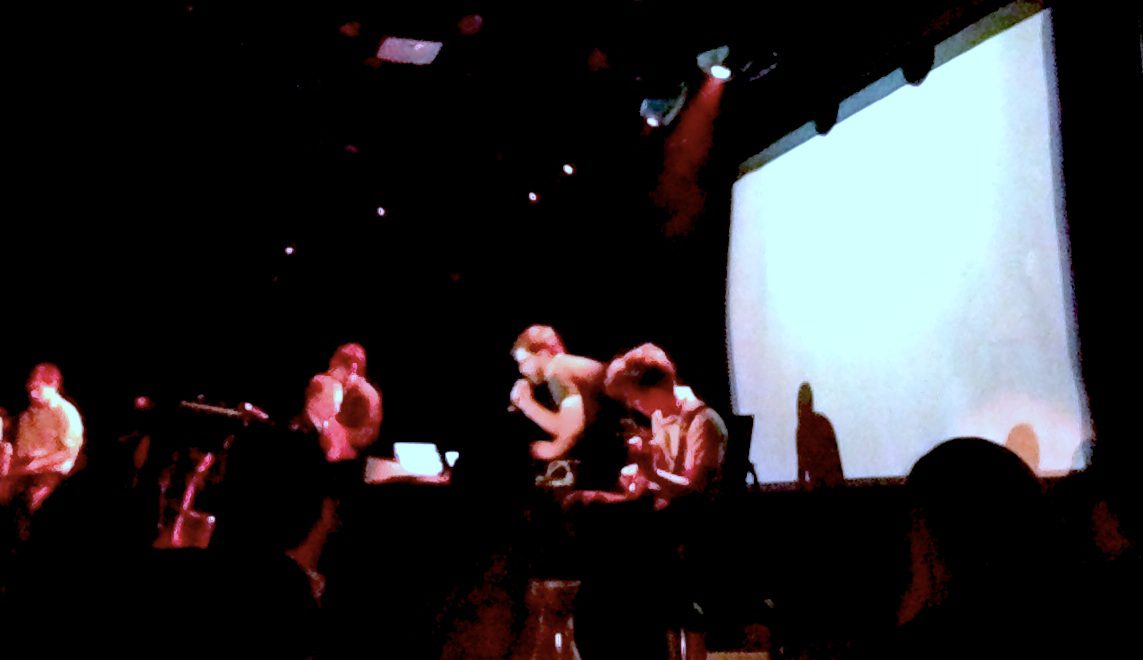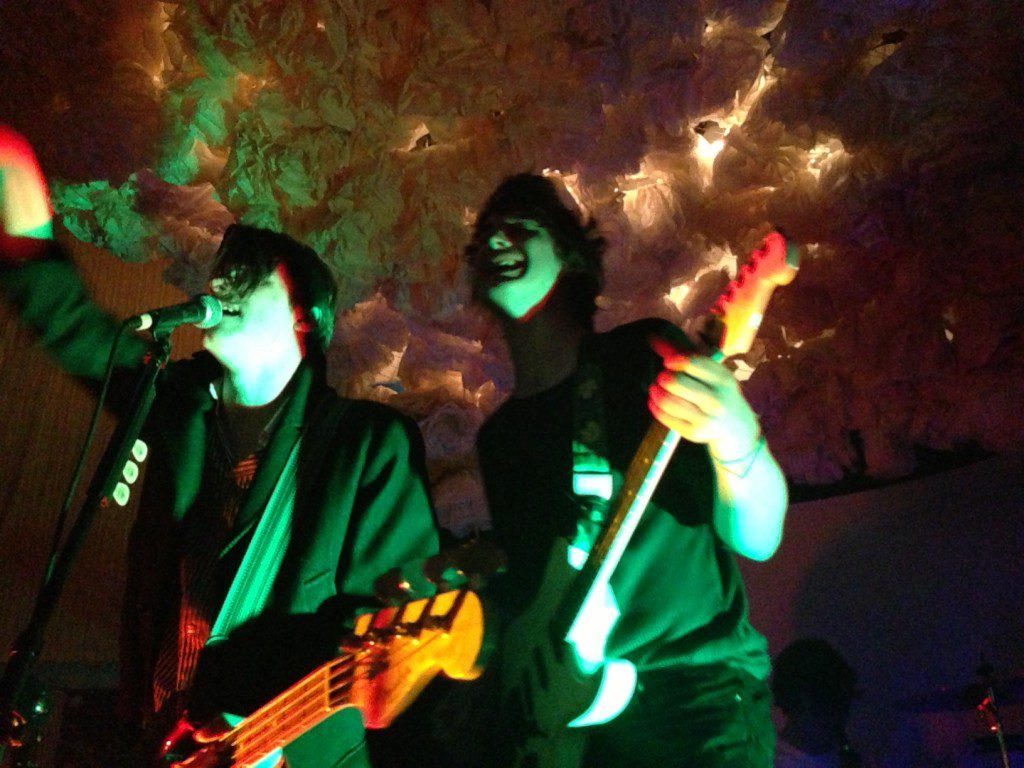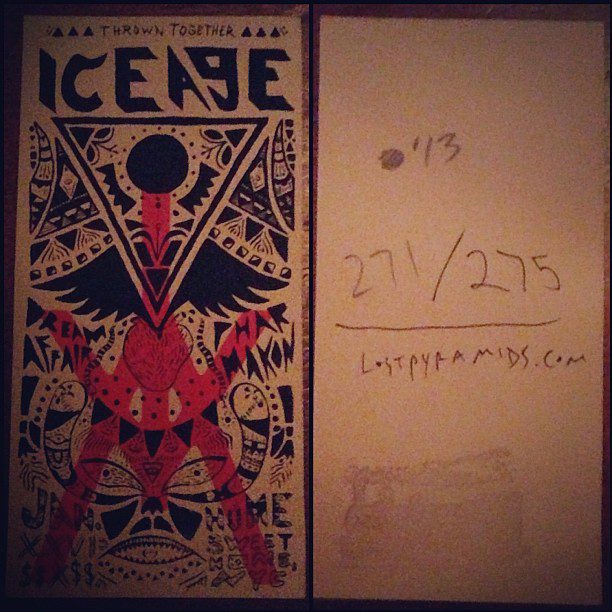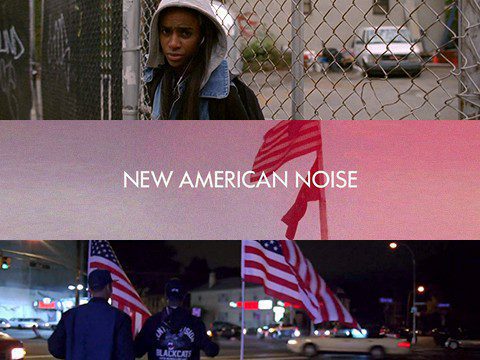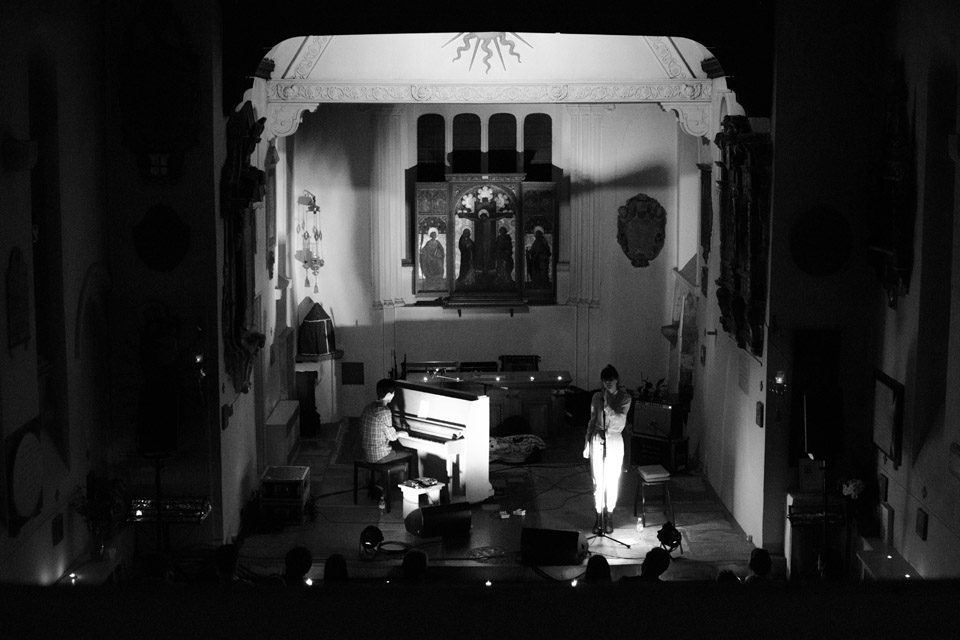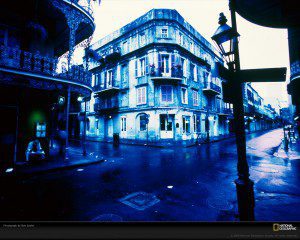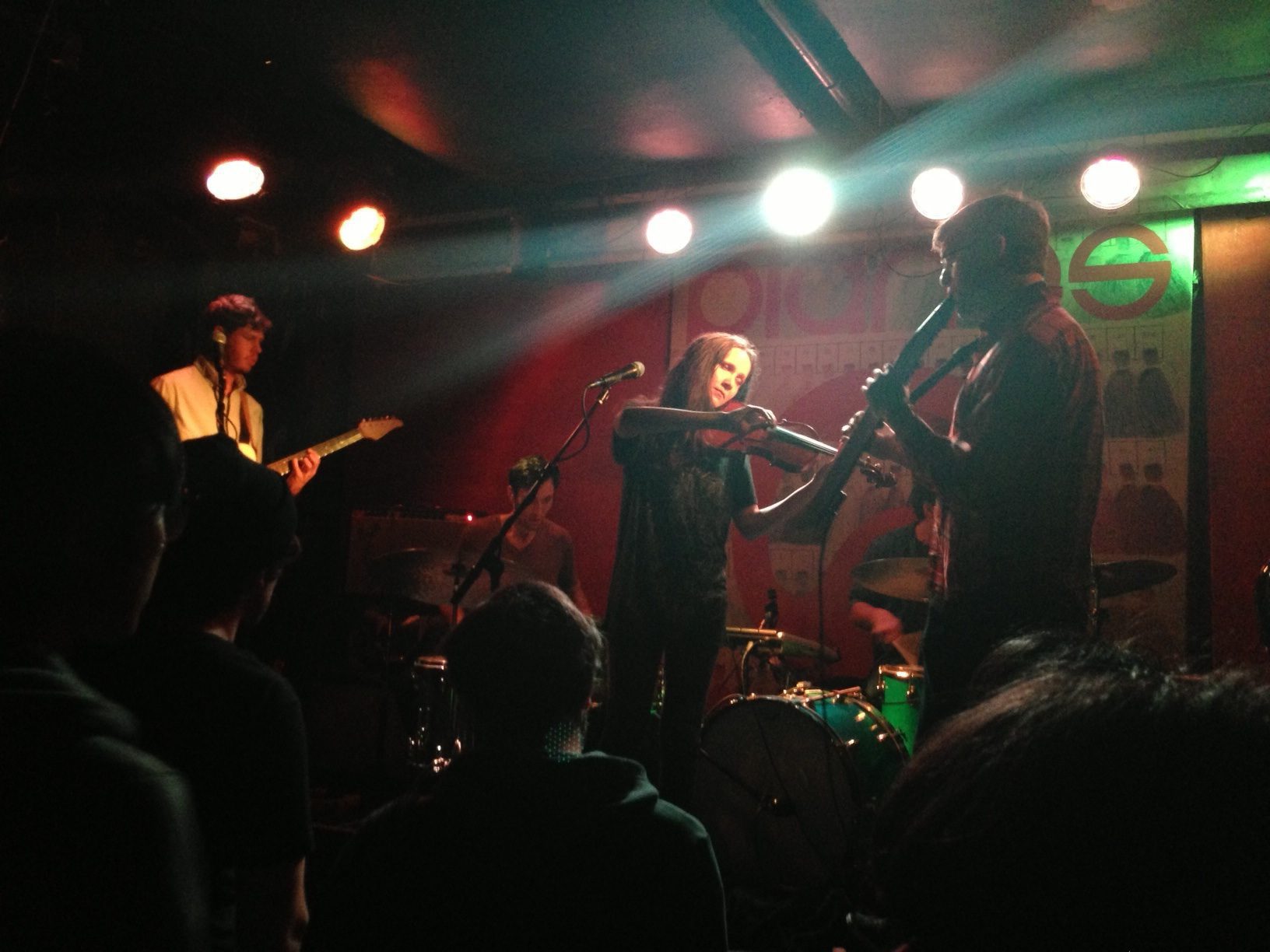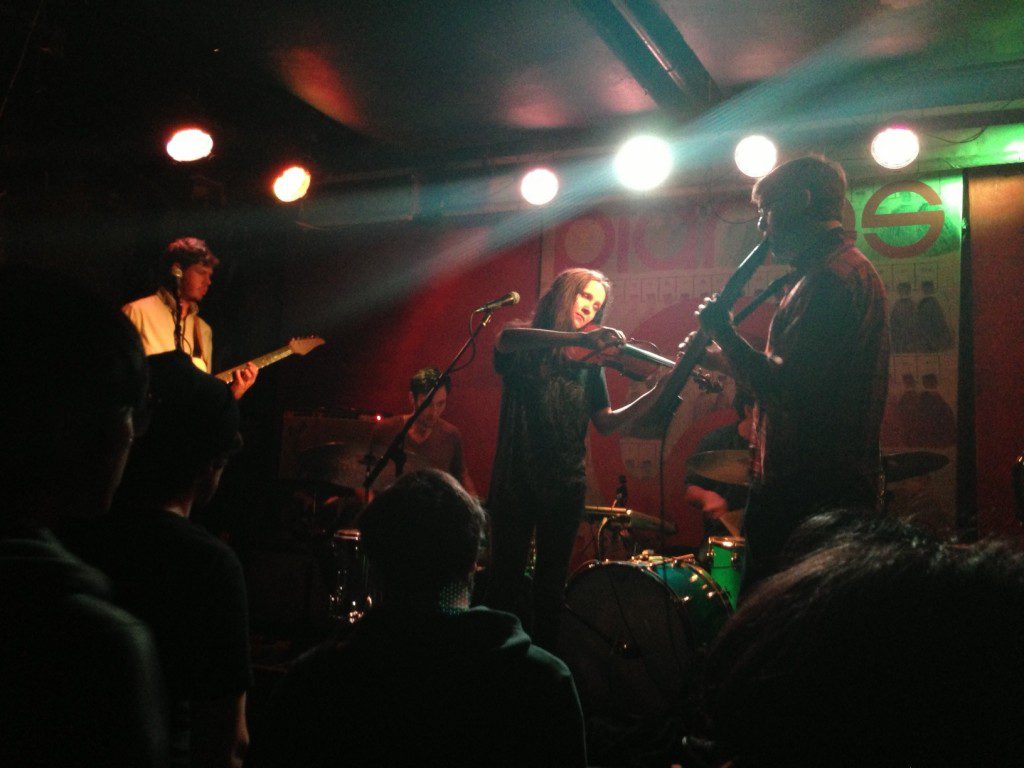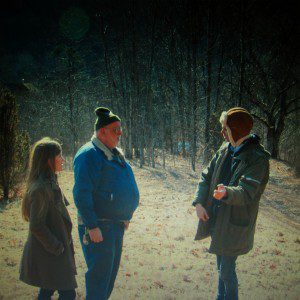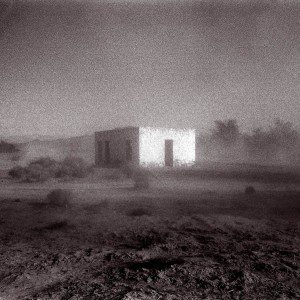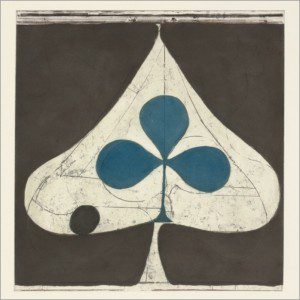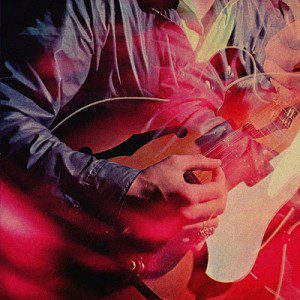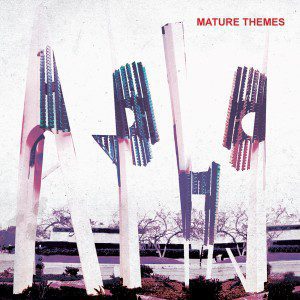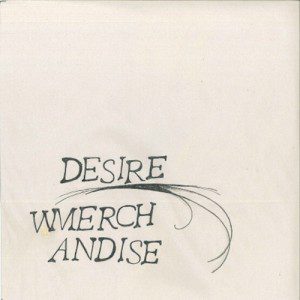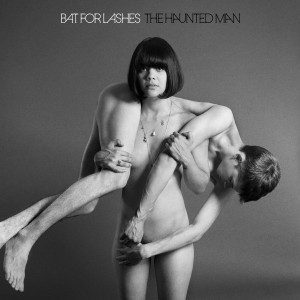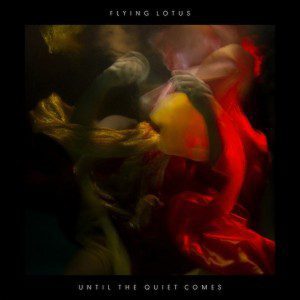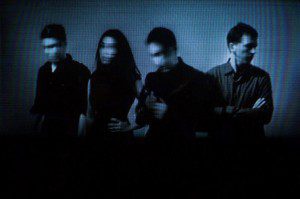
There are plenty of bands playing shows these days that borrow heavily from the sounds of decades past, but no one merges garage, psych, and Americana so profoundly as Brooklyn’s own Prince Rupert’s Drops, who also manage to update these sounds just enough for their work to sound wholly new. The band released their debut LP, Run Slow, on Beyond Beyond is Beyond Records last November. It was the first release for the new label, run by East Village Radio’s Mike Newman, and hits all the reference points of a record store clerk’s dreams.
Guitarists Leslie Stein, Bruno Meyrick-Jones, and bassist Chad Laird share vocal duties, sometimes harmonizing and sometimes taking turns track for track. Each member of the band, rounded out by drummer Steve McGuirl and Kirsten Nordine’s synths, bring unique elements to every track, and those tracks in turn take on varied personalities. Leslie’s stoney twang, for instance, lends folksy vibes to tracks like “Lungs”, “The Fortress” and “Like A Knife”, but a few heavy doses of reverb later and you’ve got a raucous, tumbling psych jam like “Pillar to Post”. “Almond Man” has a bit of a groovier feel, but stays alert and snappy with energetic “hey heys” and touches of sitar. No one song follows any formula, from the churning and lysergic “Plague Ride” with its spiraling guitar work, to the scorched haze of “This Evening’s Arms”, giving the album great depth and a texture. Each instrument gets its moment as the tracks unfold, every note imbued with a singular quality, and it never wears thin, even when tracks like album closer “Run Slow” extending over nine minutes.

There are very few bands who can pull sounds like this together, but Prince Rupert’s Drops do it with aplomb both on the album and in a live setting. We’ve been bowled over every time we’ve had the pleasure to see them perform, and were pretty, well… psyched when they agreed to do an interview with us. Their words give us insight as to how the band came together to make the kind of magic we hear all over Run Slow.
AF: Leslie and Bruno, you met while working together at Kim’s Records in NYC. Was there an immediate connection or collaborative spark?
Leslie: I think most people have an immediate connection to Bruno, he’s a popular guy! We were fast friends and spent a lot of time hanging out. He needed a place to live at the same time I needed a roommate so he moved in. After that we would spent many nights in collaborating on drawings and making odd little songs just for fun.
AF: Can you talk about Brad Truax and the role he had in helping to form the band?
Bruno: Brad was really the one who made it a proper band- previously, Leslie & I had played music together a fair bit & made up weird songs with her acoustic guitar and small keyboards, but nothing structured or that was ever played twice. Brad & I had played in the Broke Revue together, as had Steve briefly, and this was also an opportunity to continue playing music with them. He also kindly gave me a guitar on my birthday around then, which has been very helpful. I very much doubt we’d have got our act together had it not been for him.
[fusion_builder_container hundred_percent=”yes” overflow=”visible”][fusion_builder_row][fusion_builder_column type=”1_1″ background_position=”left top” background_color=”” border_size=”” border_color=”” border_style=”solid” spacing=”yes” background_image=”” background_repeat=”no-repeat” padding=”” margin_top=”0px” margin_bottom=”0px” class=”” id=”” animation_type=”” animation_speed=”0.3″ animation_direction=”left” hide_on_mobile=”no” center_content=”no” min_height=”none”][bandcamp track=1306247888 bgcol=FFFFFF linkcol=4285BB size=venti]
AF: Not many people realize that Prince Rupert’s Drops formed in 2005. That’s an incredibly long gestation for a band these days. Was that timing part of a conscious effort to develop a distinct sound and working relationship?
Steve: It wasn’t a conscious effort. We just kept doing it (except for about a year off), having a good time, playing shows (some good, some bad), and just followed the path the band took, curious as to where it would go. The sound has changed a bit over time, but our earliest stuff is still recognizably ours. Leslie once described us years ago as “the least ambitious band in the world!” We didn’t even consider having a Facebook page until late last year. That’s all changed, and now we want a #1 record. Anyway, by playing together for a while, hopefully a distinctive sound has emerged, and we know each other pretty well. Our working relationship is, for the most part, really solid, really relaxed. We are all good friends, which helps.
Leslie: I think we’ve always been ambitious musically… Bruno writes these complicated songs that threaten to implode at any moment, I always try and sing better than I can. In a way we write above the level of our talents.
AF: How was taking that time valuable in launching the band? Is the record’s title a nod to that?
Steve: No, the record title is just taken from the longest song on the LP. Somehow, that made sense—it sounded like a good record title.
Bruno: It’s probably helped us to solidify our sound a bit- the songs are a lot longer these days too, mainly to accommodate all the soloing that wasn’t there at first.
AF: All of you have played in other bands. How do you approach collective songwriting?
Steve: We all write songs, but the vast majority are by Leslie & Bruno. Some come in practically finished, some take a lot of working with ‘til they sound right played by this band.
Leslie: I used to write parts for the guys for my songs until I wised up and realized they are all better musicians than me. Now I just come in with two or three parts and they help me shape the songs. Bruno’s really good at writing these awesome little leads that accentuate the way I sing, Steve and Chad are really the ones that are good at structuring songs. When Chad writes songs he generally thinks about the strengths of each member and writes around that.
[bandcamp track=3421341535 bgcol=FFFFFF linkcol=4285BB size=venti]
AF: How did you meet Mike Newman at EVR? Did you feel any pressure putting out the first release on his Beyond Beyond Is Beyond label?
Steve: We met Mike through our mutual pal, Chris Milstein (he plays drums in Psychic Ills and is a longtime friend), who recommended us to BBIB. Mike and his partner Dom saw us live at 285 Kent, and asked for some recordings. They then got us really drunk, outlined a complex, air-tight, 20-point plan for world domination by October 2013, and put a contract under our noses and a pen in our hands. We signed it.
Mike puts a lot of pressure on us—he’s pretty ruthless. He’s a Record Man of the old school, like Syd Nathan or Morris Levy. There are always these hired goons lurking over his shoulders during meetings in his office, giving us the evil eye.
AF: At a time when more artists are bringing electronic elements into their production and stage show, you’ve remained true to a more traditional approach. Do you think that’s given you an advantage or changed the sort of audiences you attract?
Leslie: We’ve never really considered adding any electronic elements. I’m personally not opposed to it, good music is good music and it can be made any which way, but we already have a lot going on with five members, so I think we are sonically set for now.
AF: You have a great reputation as a live act. What’s the best thing about playing live?
Steve: Thanks! I guess seeing friends and strangers both having a good time, looking up and seeing folks nodding along trance-like. That’s all pretty nice, but drink tickets rule! But most venues are so stingy with them these days it’s horrible.
Bruno: I’d say the best thing about playing live, aside from seeing other bands for free, is just the playing itself- if it goes well. It’s obviously good to be in the same room as the audience, though, since you can have some idea of how the songs are being received, and can then hopefully act accordingly.
AF: Do you have favorite venue to play here in Brooklyn (or beyond)? You’ve shared a bill with lots of great acts, especially of late – who would you love to play with next?
Steve: Playing parties at Wild Kingdom is always great. We played Bowery Ballroom recently, and that dee-luxe stage was a nice change of pace from the usual DIY dumps. The act I vote for is ZZ Top!
Leslie: I like playing the Cakeshop because we had our first show there and to me it feels like home. I want to open for Tame Impala, I love them.
[bandcamp track=3971824008 bgcol=FFFFFF linkcol=4285BB size=venti]
AF: Any plans for a tour?
Steve: We hope/plan to, but lately day jobs keep conspiring against us. If you’re reading this, and are in a popular band looking for an opening act on an American tour this summer, let us know!
AF: What’s next for the band? Will it take another seven years for a sophomore release or are you already working on new material?
Steve: We are always working on new material, and have tons of old stuff that isn’t on “Run Slow.” Our next release should be a boxed set.
Leslie: Yeah, I was talking to Mike about this recently and he was maybe thinking next year for another release which would be great and totally feasible.
AF: I also wanted to mention Leslie’s brilliant comics project, Eye of The Majestic Creature! Do your instruments talk to you? Will you write a comic about your experience in PRD or will the band make an appearance in your graphic work?
Leslie: They just talk to me in my comics, I am quite sane! Actually Bruno, Steve, and Kirsten are already characters in my comic, but the band hasn’t shown up as a whole yet. It’d be fun to do an issue where my imaginary instruments have to deal with real instruments. I bet the band stuff would mostly be boring stuff like us going out to eat after practice and naming movies that have baby bandits in them and talking about making a Ray Milland looped tape to play behind us at shows. Y’know, all the obvious stuff.
[bandcamp track=67888118 bgcol=FFFFFF linkcol=4285BB size=venti]
Prince Rupert’s Drops plays Union Pool on Thursday, March 28th.
[/fusion_builder_column][/fusion_builder_row][/fusion_builder_container]

 DATALOG (moniker of Brooklyn-based digital artist Conor Heffernan), is garnering momentum and buzz on the NYC indie electronic circuit for his recent live performances, many of which have included stunningly curated videography that rivals any I’ve seen in quite some time. His body of work is immense, and reflects the inclinations of an artist coming into his own, though he has yet to release a full-length album. The genre that he deals in—namely live electronic music that incorporates visual or performance art—is an increasingly compelling medium for performers and audiences alike, and hence includes its fair share of mediocrity. In fact so much mediocrity that you could say its heyday is up. Or needs to die and be reborn I suppose. From what I’ve seen, DATALOG is at the forefront of that rebirth, and people should be taking notice.
DATALOG (moniker of Brooklyn-based digital artist Conor Heffernan), is garnering momentum and buzz on the NYC indie electronic circuit for his recent live performances, many of which have included stunningly curated videography that rivals any I’ve seen in quite some time. His body of work is immense, and reflects the inclinations of an artist coming into his own, though he has yet to release a full-length album. The genre that he deals in—namely live electronic music that incorporates visual or performance art—is an increasingly compelling medium for performers and audiences alike, and hence includes its fair share of mediocrity. In fact so much mediocrity that you could say its heyday is up. Or needs to die and be reborn I suppose. From what I’ve seen, DATALOG is at the forefront of that rebirth, and people should be taking notice.











